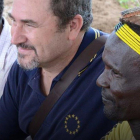Rural youth and employment in Ethiopia. Emily Schmidt & Firew Bekele for IFPRI/EDRI. 2018
ABSTRACT
Ethiopia’s focus on Agricultural Development Led Industrialization (ADLI) has led the country to invest heavily in agriculture. This has played a large role in the country’s impressive economic growth – approximately 11 percent per year over the last decade. Given this growth, the economic literature would suggest that Ethiopia is on a pathway to structural transformation of its economy, however macro-economic trends suggest minimal transitions from agriculture to higher value labor activities. Ethiopia remains one of the least urbanized countries in sub-Saharan Africa (84 percent of the total population is considered rural) and approximately three-quarters of the population is engaged in agricultural activities. Slow urbanization, paired with vibrant economic growth, suggests that rural youth will shape the transformation process as well as characterize the work force engaged in agricultural production in years to come.
This paper examines labor diversification in Ethiopia, focusing on youth, and explores current conditions that youth face in both the agricultural and non-farm labor markets. Using data from the Ethiopia Socioeconomic Survey (ESS) and the National Labor Force Survey (NLFS), we explore current trends in labor diversification, along with youth non-farm engagement in rural and small towns. We find that youth (ages 25 to 34 years) have a greater probability of working in non-farm enterprises compared to mature individuals (age 35-64). However, wage labor opportunities remain scant in rural Ethiopia. The majority of individuals working in non-farm employment are engaged in small-scale trade activities.
Our analysis suggests that push factors are at play with regards to non-farm diversification, whereby those that live in less favorable agricultural potential areas with fewer assets, such as livestock, and less access to agricultural credit are more likely to seek off-farm work. While this research provides evidence that selected youth are engaged in off-farm labor opportunities, however, a low proportion of the rural population, including youth, has diversified into other activities outside of agriculture. Low demand for higher-skilled labor remains a major obstacle to achieving structural transformation in Ethiopia in the near to medium term.

Log in with your EU Login account to post or comment on the platform.